An Exceptional Narwhal Tusk of a Very Early Date
An Exceptional Narwhal Tusk of a Very Early Date
‘Monodon Monoceros’
Northern Europe
15th - 16th Century (Circa AD 1440 - 1505)
SIZE: 205cm long - 80¼ ins long / 230cm high - 90½ ins high (with base)
CITES no. 537359/01
Radiocarbon Dating Measurement Report: 10/2/2016 / RCD-8506 (68% confidence interval: AD 1433 - 1477, 95% confidence interval: AD 1410 - 1505)
‘Monodon Monoceros’
Northern Europe
15th - 16th Century (Circa AD 1440 - 1505)
SIZE: 205cm long - 80¼ ins long / 230cm high - 90½ ins high (with base)
CITES no. 537359/01
Radiocarbon Dating Measurement Report: 10/2/2016 / RCD-8506 (68% confidence interval: AD 1433 - 1477, 95% confidence interval: AD 1410 - 1505)
An Exceptional Narwhal Tusk of a Very Early Date
‘Monodon Monoceros’
Northern Europe
15th - 16th Century (Circa AD 1440 - 1505)
SIZE: 205cm long - 80¼ ins long / 230cm high - 90½ ins high (with base)
CITES no. 537359/01
Radiocarbon Dating Measurement Report: 10/2/2016 / RCD-8506 (68% confidence interval: AD 1433 - 1477, 95% confidence interval: AD 1410 - 1505)
‘Monodon Monoceros’
Northern Europe
15th - 16th Century (Circa AD 1440 - 1505)
SIZE: 205cm long - 80¼ ins long / 230cm high - 90½ ins high (with base)
CITES no. 537359/01
Radiocarbon Dating Measurement Report: 10/2/2016 / RCD-8506 (68% confidence interval: AD 1433 - 1477, 95% confidence interval: AD 1410 - 1505)
In 1555 Olaus Magnus in Uppsala, Sweden wrote of the narwhal ‘The monoceros is a sea monster which has a very large horn in its forehead with which it can pierce through and destroy ships and kill many men’ (Historia de Gentibus Septentrionalibus). Mariners hunting the sperm whale, the colossi of the sea, would encounter the narwhal and presume them to be the ‘unicorns of the sea’. The tusks would be brought back from Greenland and the Arctic and sold to merchants and collectors as valuable magical objects for cabinets of curiosities.
It was the greatest Danish scientist of the 16th century, Ole Worm (1588 - 1654) who discovered the truth on being given a narwhal skull complete with its tusk in Copenhagen in 1615. His drawing of it was used as an illustration for a thesis in 1638 debating whether the tooth might possess the same magical qualities attributed to the unicorn’s horn. Belief in the existence of the unicorn persisted into the 18th century when there could be found over 100 ‘unicorn’ apothecary shops in Germany. The animal and its mythical horn was found displayed on jars, bags, bottles and even invoice headings until the late 18th century as a reminder of the time when powder made of ‘unicorn’ horn was held in high esteem as a cure for all ills and an important antidote to poison.
This very early tusk, probably the oldest example Finch and Co have handled in over 30 years, has been traded, bought and sold, moved between collectors and dealers for over 600 years. It is very likely to be amongst the oldest example in the world.
Due to their mystic, magical power, ‘other worldly’ presence and their association with the ‘mythical’ unicorn, their price was higher than their weight in gold ! In 1577 Queen Elisabeth I was gifted a ‘unicorn horn’ by Martin Frobisher following his return from Canada, an account of which was described by Herman Melville in ‘Moby Dick’: ….. ‘Sir Martin Frobisher, on his return from that voyage, when Queen Bess did gallantly wave her jewelled hand to him, from a window of Greenwich Palace as his bold ship sailed down the Thames ….. on bended knees he presented to her highness a prodigious long horn of the Narwhale, which for a long period hung in the castle at Windsor’.
The ‘Horn of Windsor’, as it then became known, was at the time valued at £10,000, a higher price than Windsor itself !
It was the greatest Danish scientist of the 16th century, Ole Worm (1588 - 1654) who discovered the truth on being given a narwhal skull complete with its tusk in Copenhagen in 1615. His drawing of it was used as an illustration for a thesis in 1638 debating whether the tooth might possess the same magical qualities attributed to the unicorn’s horn. Belief in the existence of the unicorn persisted into the 18th century when there could be found over 100 ‘unicorn’ apothecary shops in Germany. The animal and its mythical horn was found displayed on jars, bags, bottles and even invoice headings until the late 18th century as a reminder of the time when powder made of ‘unicorn’ horn was held in high esteem as a cure for all ills and an important antidote to poison.
This very early tusk, probably the oldest example Finch and Co have handled in over 30 years, has been traded, bought and sold, moved between collectors and dealers for over 600 years. It is very likely to be amongst the oldest example in the world.
Due to their mystic, magical power, ‘other worldly’ presence and their association with the ‘mythical’ unicorn, their price was higher than their weight in gold ! In 1577 Queen Elisabeth I was gifted a ‘unicorn horn’ by Martin Frobisher following his return from Canada, an account of which was described by Herman Melville in ‘Moby Dick’: ….. ‘Sir Martin Frobisher, on his return from that voyage, when Queen Bess did gallantly wave her jewelled hand to him, from a window of Greenwich Palace as his bold ship sailed down the Thames ….. on bended knees he presented to her highness a prodigious long horn of the Narwhale, which for a long period hung in the castle at Windsor’.
The ‘Horn of Windsor’, as it then became known, was at the time valued at £10,000, a higher price than Windsor itself !
Ex Private collection
Ex Finch and Co
Ex Oliver Hoare, published, Every Object Tells a Story, described as ‘The Unicorn’s Horn’ item number 1, 2017
Ex Private collection
CITES no. 537359/01
Radiocarbon Dating Measurement Report: 10/2/2016 / RCD-8506 (68% confidence interval: AD 1433 - 1477, 95% confidence interval: AD 1410 - 1505)
Ex Finch and Co
Ex Oliver Hoare, published, Every Object Tells a Story, described as ‘The Unicorn’s Horn’ item number 1, 2017
Ex Private collection
CITES no. 537359/01
Radiocarbon Dating Measurement Report: 10/2/2016 / RCD-8506 (68% confidence interval: AD 1433 - 1477, 95% confidence interval: AD 1410 - 1505)
An Exceptional Narwhal Tusk of a Very Early Date
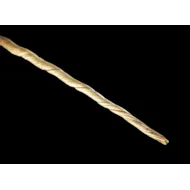
SOLD
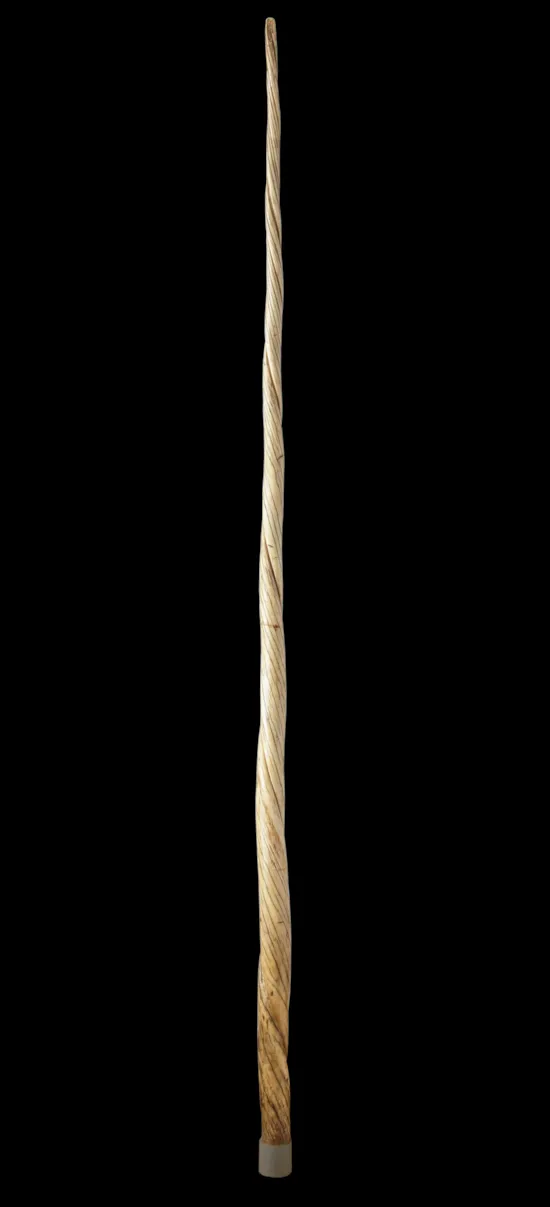
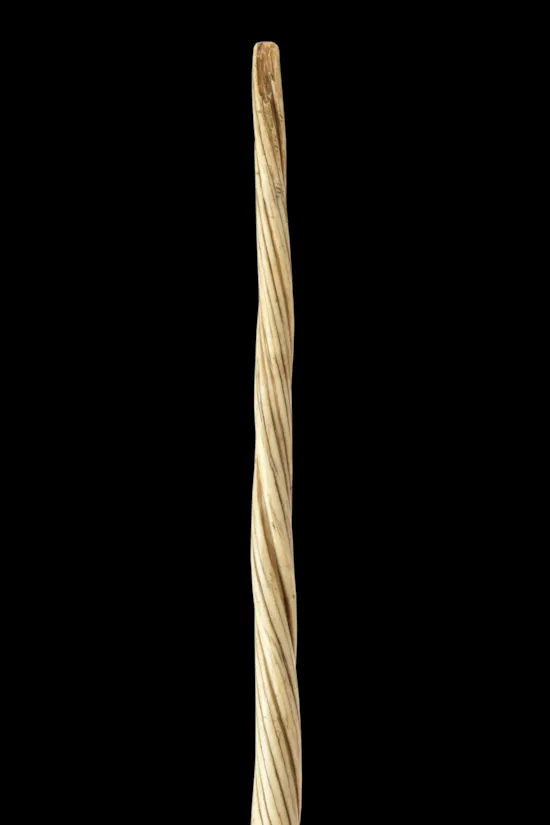
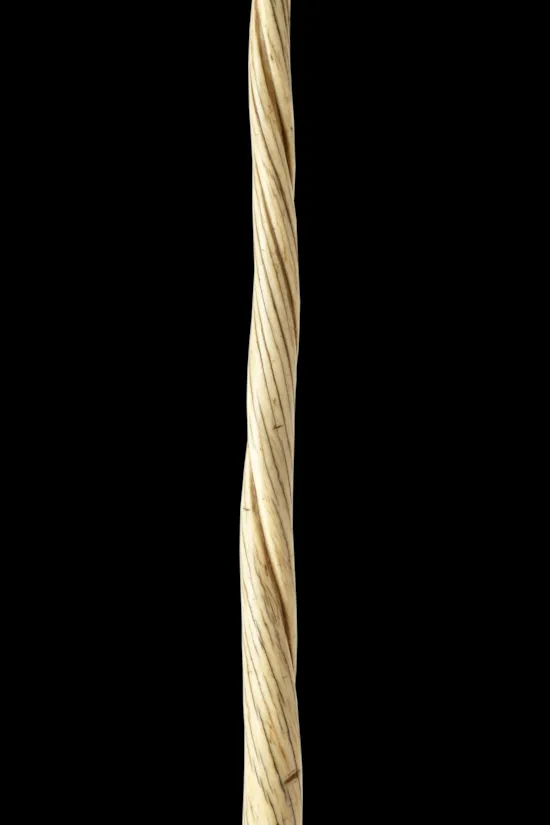
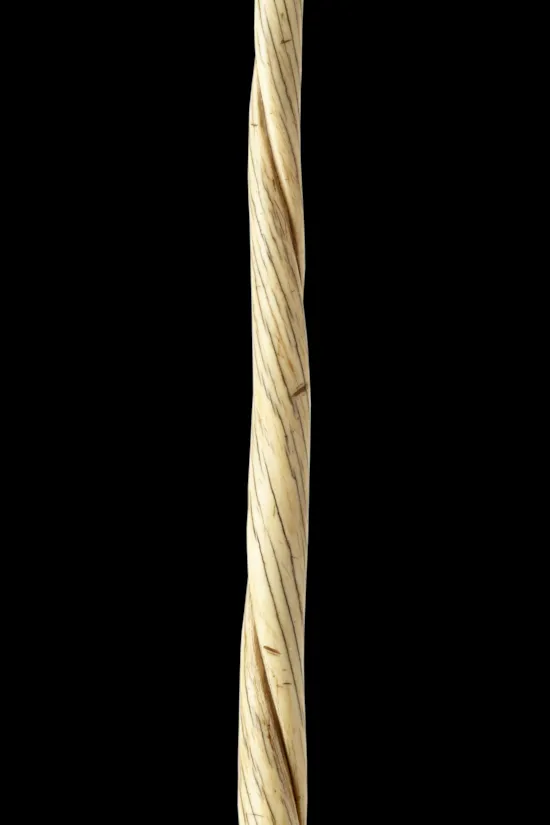
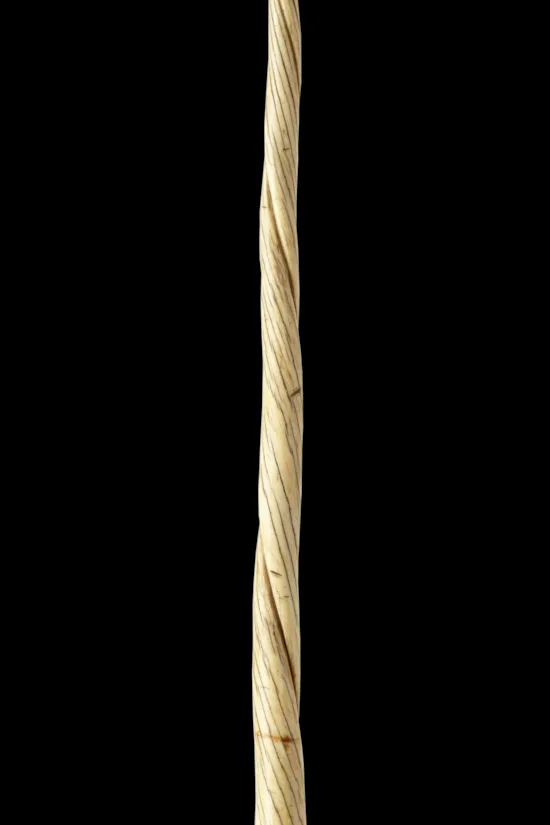
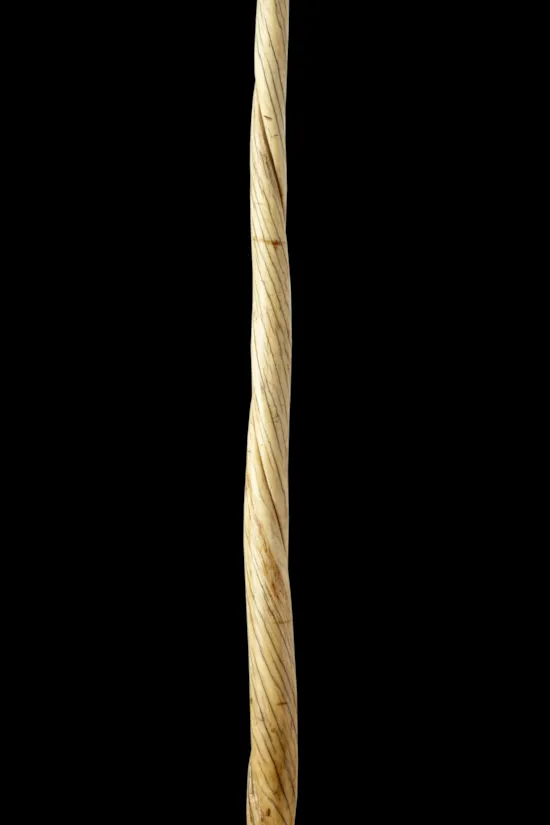
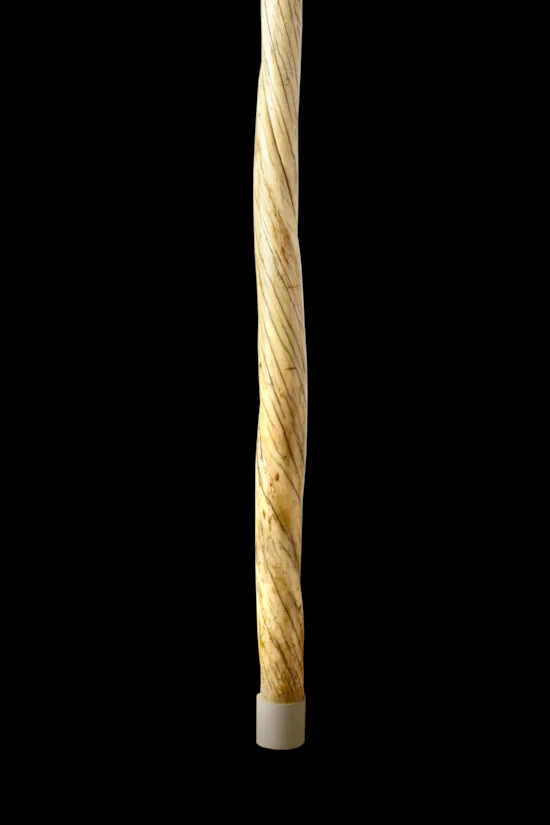
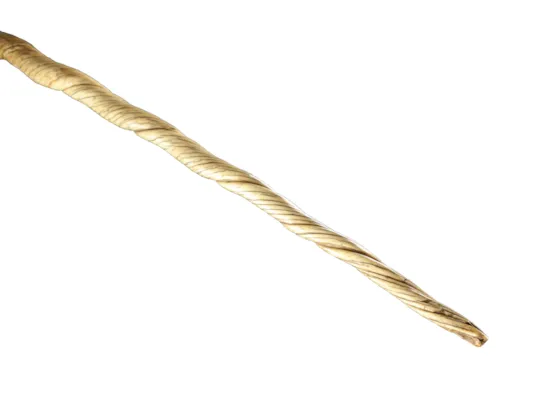
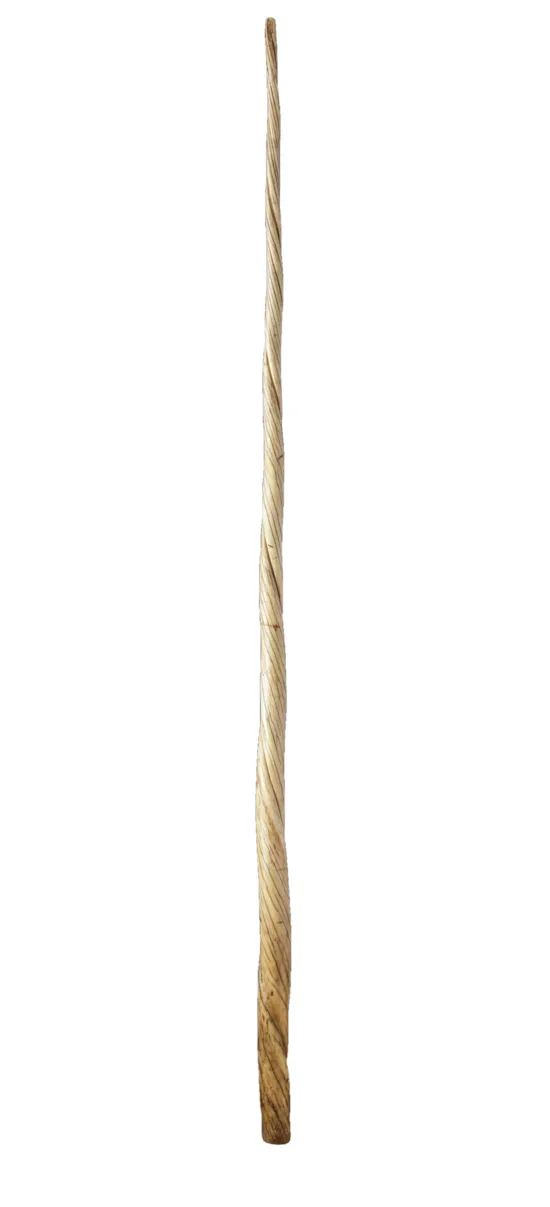
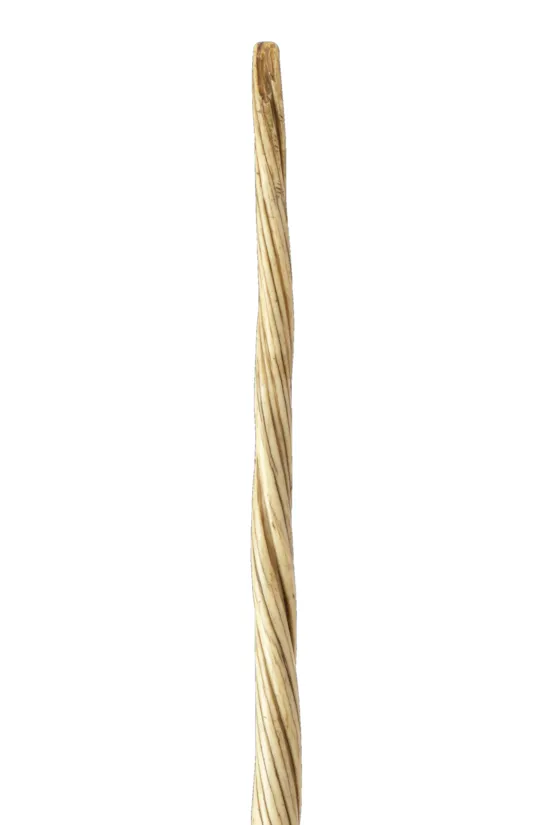
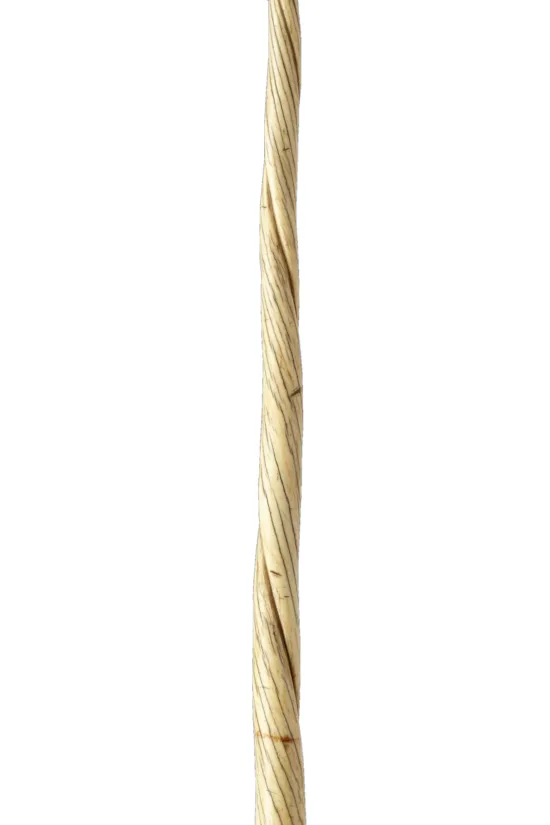
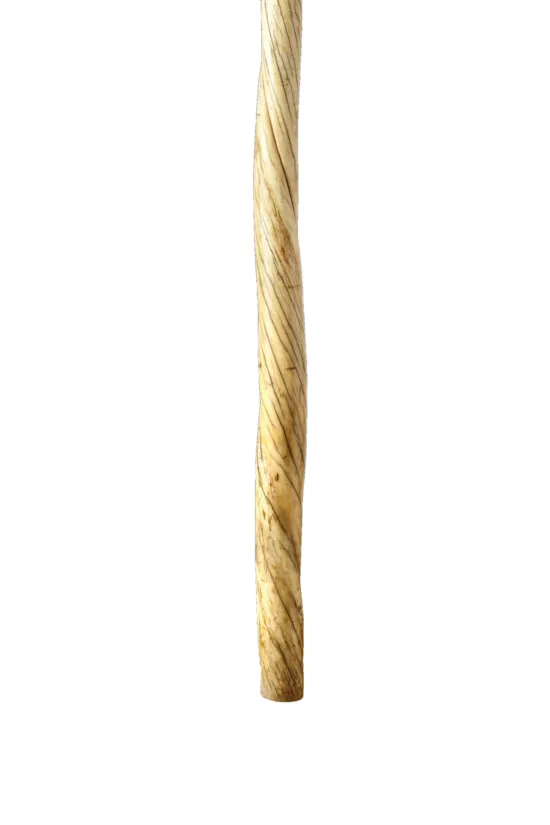












YOU MAY ALSO LIKE

